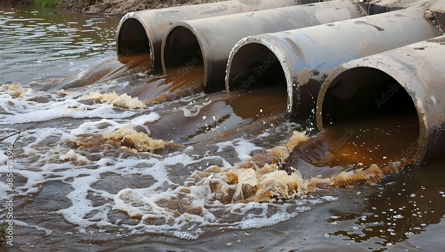In Laurel, Mississippi, where annual rainfall averages over 57 inches and severe weather events are common, understanding category 3 water damage becomes crucial for property owners. The city's historic architecture, combined with its subtropical climate and vulnerability to severe storms, creates unique challenges when dealing with this most severe form of water damage. This comprehensive guide will help you understand the risks, identify the signs, and know when to seek professional help.
What Exactly is Category 3 Water Damage?
Category 3 water damage, often called black water damage, represents the most severe classification of water damage that can affect your Laurel property. This type of damage occurs when highly contaminated water containing harmful pathogens, chemicals, or other dangerous substances infiltrates your property. In Laurel's context, this often results from severe weather events, flooding from the Tallahala Creek, or sewage backups common in the city's historic districts. The significance of category 3 water damage becomes particularly relevant in Laurel's climate, where high humidity levels can amplify the growth of harmful microorganisms. Our region's frequent thunderstorms and potential for hurricane-related flooding make understanding this severe form of water damage essential for local property owners.
How Can You Identify Category 3 Water Damage in Your Laurel Property?
Recognizing category 3 water damage quickly is crucial for protecting both your property and your health. Here are the key indicators that suggest you're dealing with category 3 water contamination:
Dark or discolored water stains with a distinctive, foul odor
Visible sewage or debris carried in by flood waters
Mold growth appearing within 24-48 hours of water exposure
Contaminated water contact with porous materials like carpets, upholstery, or drywall
Standing water originating from beyond your property lines
Water damage following severe weather events or sewage backups
Swift identification of these signs is particularly important in Laurel's climate, where our high humidity levels and warm temperatures can accelerate the growth of harmful bacteria and mold. Understanding these indicators helps you respond appropriately and minimize the risk to your health and property. Moving beyond identification, it's essential to understand the specific risks and necessary response measures for category 3 water damage. Our local environmental conditions require a specialized approach to remediation and restoration.
What Health Risks Come with Category 3 Water Damage?
The health implications of category 3 water damage are particularly serious in Laurel's warm, humid climate. The contaminated water can contain various harmful substances, including bacteria, viruses, parasites, and chemical contaminants. These dangers are amplified by our region's climate conditions, which can accelerate the growth and spread of harmful microorganisms. For Laurel property owners, understanding these risks becomes even more critical due to our unique climate challenges. The combination of high temperatures and humidity creates an environment where pathogens can thrive and spread more rapidly than in other regions. This is especially concerning in our historic properties, where older building materials may be more susceptible to contamination.
What Immediate Steps Should Laurel Property Owners Take?
When facing category 3 water damage, taking prompt and appropriate action is crucial. Here are the essential steps every Laurel property owner should follow:
Ensure Safety First - Evacuate the affected area immediately and prevent access to contaminated spaces. Given Laurel's older architectural styles, be particularly mindful of structural integrity.
Document Everything - Take detailed photos and videos of all damage for insurance purposes. Mississippi insurance requirements often need thorough documentation for water damage claims.
Contact Professionals - Reach out to licensed water damage restoration specialists who understand Laurel's unique building characteristics and climate challenges.
Prevent Cross-Contamination - Seal off affected areas to prevent the spread of contamination to unaffected spaces, particularly important in our humid climate.
Begin the Claims Process - Contact your insurance provider immediately, as many Mississippi policies have specific requirements for water damage claims.
Protect Unaffected Items - Remove undamaged items from the affected area to prevent secondary damage from high humidity levels common in Laurel.
Understanding these steps is crucial, but it's equally important to recognize when professional intervention becomes necessary. In Laurel's climate, the timeline for effective remediation can be particularly tight due to our environmental conditions.
Why Professional Restoration is Crucial for Category 3 Water Damage
Professional restoration becomes especially important in Laurel due to our unique climate challenges and building characteristics. Local restoration experts understand how our humidity levels affect the drying process and know the specific approaches needed for our historic properties. They possess the specialized equipment and expertise necessary to handle the complexities of category 3 water damage safely and effectively. Additionally, professional restorers are familiar with local building codes and regulations, ensuring that the restoration process meets all Mississippi state requirements. They can also help navigate the insurance claims process, which can be particularly complex for category 3 water damage in our region.
Contact ServiceMaster Action Cleaning for Expert Water Damage Restoration
When category 3 water damage threatens your Laurel property, don't take chances with your health and safety. ServiceMaster Action Cleaning brings specialized expertise in handling the unique challenges of water damage restoration in Mississippi's climate. Our team understands the specific needs of Laurel properties and provides comprehensive restoration services tailored to our local conditions. Contact us immediately for 24/7 emergency response and professional guidance through the restoration process.


